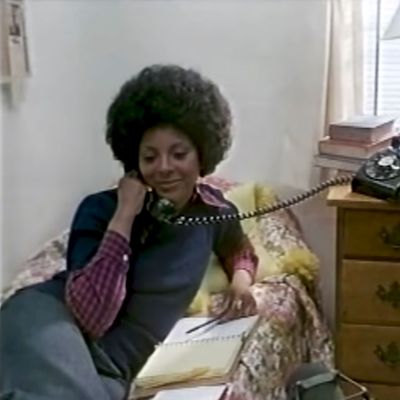
“Everything I do speaks specifically to Black people. Will a Black person take this and do what they need with it?,” says Maya Cade, the intrepid founder of Black Film Archive and the audience-development strategist for the Criterion Collection. Cade announced the launch of her archival website on Twitter last week, and the adulation has been fervent. Among the praise is The Black List founder, Franklin Leonard, who proclaimed, “Good morning to @mayascade and @mayascade only.”
With Black Film Archive, Cade made a simple yet bold decision: She collated all the Black films made from 1915 to 1979 that were available to stream and provided links and descriptions for them on one site. The titles on the archive that are made, produced, and star Black folks number around 250 and range from major blaxploitation titles like Shaft to iconic steamy romances like Carmen Jones and lesser-known gems like the 1926 war film The Flying Ace. Their importance to the history of Black cinema is immeasurable.
Cade’s archive illuminates a stinging truth: Despite the Black-film streaming guides that proliferated on the internet during last summer’s Black Lives Matter protests, the streamers themselves have been ill-equipped to fully articulate the wealth of important Black titles that are available. Black-film history is often reduced to a small batch of titles released in the past 30 years. Cade aims to change that.
The idea for Black Film Archive first took shape on June 10, 2020, when Cade shared a Twitter thread of all the Black films before 1959 that were publicly available. “This thread started during the summer of [Black Lives Matter] protests. People were examining and reflecting on themselves,” she explains. “I wanted to say that our reflections aren’t as black and white as we’ve been made to believe. There’s a wealth of stories to pull from.” She wanted to provide an alternative to the flat, oversimplified definitions of what makes a Black film.
Once Cade decided to create an archive, her initial vision shifted: “I really had to start making different kinds of considerations because it is about the films themselves. But I also have to ask, What does the resource I want to build look like? How does that make people feel? Am I giving people the best knowledge that they can have in those one-sentence or two-sentence descriptions for each film?” When viewed together, the assemblage of thumbnails signifying each film speaks to the conversation happening between them; the image of Diana Ross in The Wiz seems to look in shock at Super Fly. It’s an illuminating juxtaposition, a form of smart visual storytelling and cataloguing that streaming services haven’t given these films.
When Cade talks about streaming services underestimating Black desire, she’s not referring to the newer large-scale releases that are now inundating libraries on Netflix, Amazon, and the like. She speaks about the ways these movies have silently resided on YouTube or Vudu with little fanfare. Either major streamers are rarely attracted to adding these titles or bury them under the glut of bigger titles. When these titles are looked over, it creates the perception that substantial Black films were not made in the 1910s, 1920s, or 1930s from the likes of Oscar Micheaux and Zora Neale Hurston. “When will these films be treasured and seen and celebrated on a grand scale? I’m hoping this is their moment,” says Cade.
Scrolling through Cade’s site, it didn’t take long before I realized just how many titles I wasn’t aware of and how many were waiting to be discovered. “These are segmented across sites. In a [streaming] world where people are given things when they ask for them, the consideration of Black desire in this specific marketplace has not been at the forefront of people’s minds,” she explains. “If there’s a Black Western on one streaming service and one on another streaming service, I’m able to put them together. I think that’s what people are also looking for.”
By celebrating these works, Cade hopes the false assumptions about what a Black film is changes. “So often it’s ‘There’s only been this type of Black film. We’re only represented this way.’ It’s a binary that isn’t true, stemming from a limited context of Black-film history,” she says. “When we are intentional about making history accessible, we can transform our collective memory. I can’t think of these films as hidden because they were all publicly available, but when they are in a space and conversation with each other, it can reimagine what Black cinema is and can be.”
For Cade, the jubilation in the form of emails the archive has received has been fulfilling. “I’m from the South. There are moments when you graduate from high school or have a big accomplishment and everyone on the block knows about it. When they see you, they’re strolling by to say how proud they are of you. That’s kind of what these emails feel like,” she says. But Cade isn’t resting on her laurels just yet. Black Film Archive is meant to evolve, to reshape to fit the needs of Black folks. “I have so many ideas, and I’ve done this without money and resources,” she says. “And I’m thankful people have donated to me, so now I have money to improve the site and what the archive can be. The thing that excites me about what’s ahead is that it’s limitless.”


